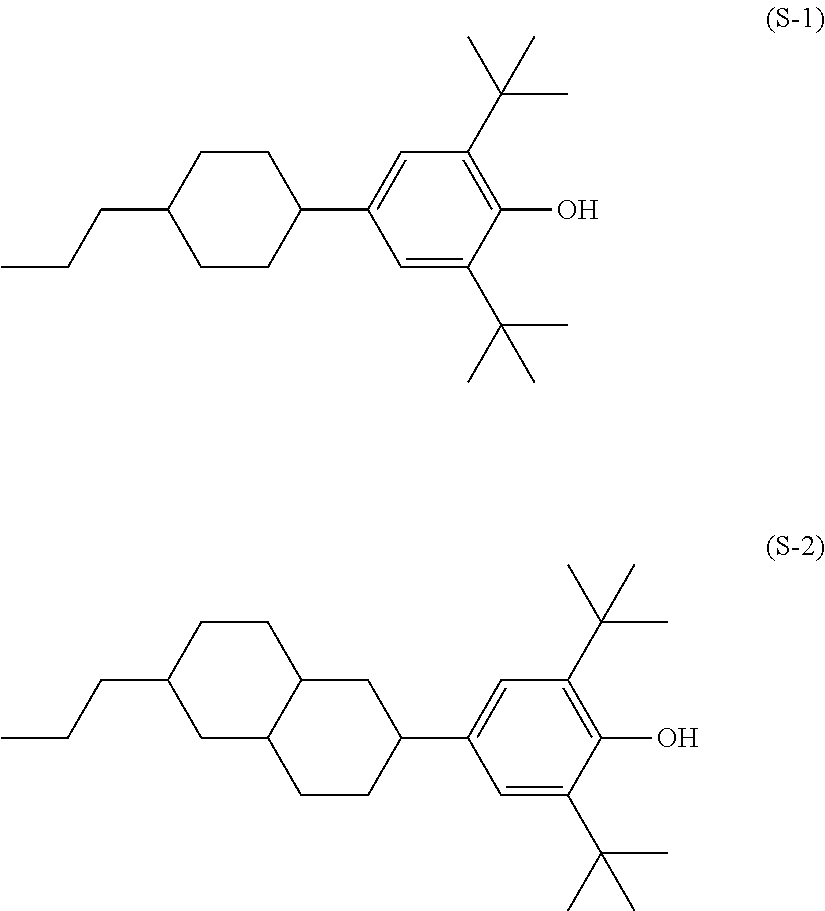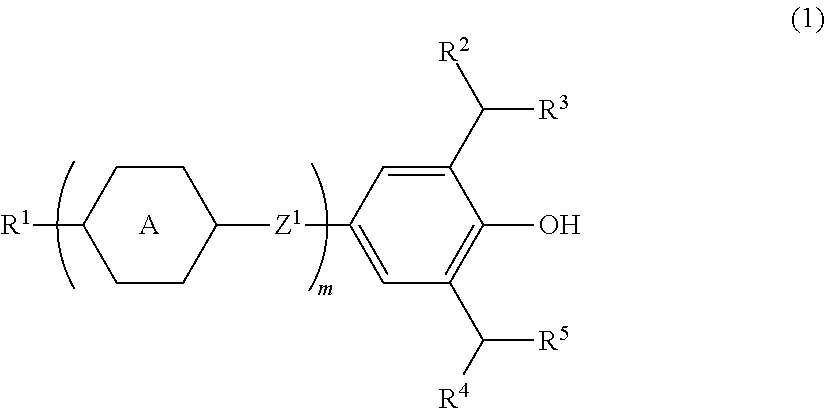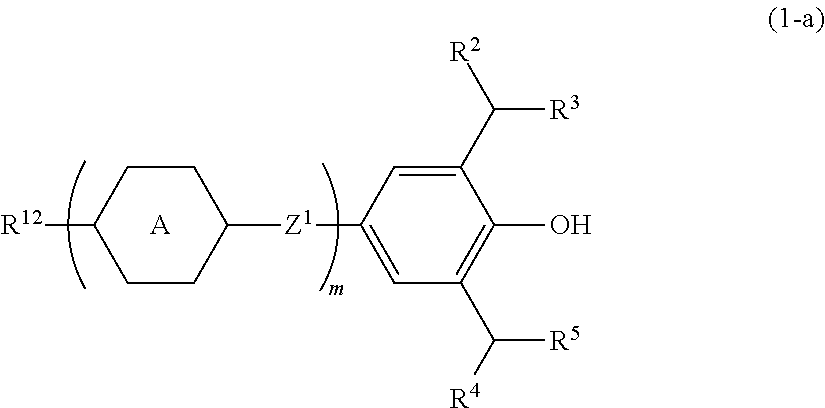Liquid crystal composition, antioxidant and liquid crystal display device
a liquid crystal display and antioxidant technology, applied in liquid crystal compositions, organic chemistry, chemistry apparatus and processes, etc., can solve the problems of long service life of the device, large contrast ratio and short response time in the device, and generation of poor display by a change over time, etc., to achieve high UV light stability, small viscosity, and large specific resistance
- Summary
- Abstract
- Description
- Claims
- Application Information
AI Technical Summary
Benefits of technology
Problems solved by technology
Method used
Image
Examples
example 1
[0116]Compound (1-a-1) was prepared according to the synthetic scheme shown below.
First Step: Synthesis of Compound (T-1)
[0117]Then, 2,6-dimethyl-4-bromoanisole (200 g) was dissolved into methylene chloride (1 L), and the resultant mixture was cooled at −30° C. under a nitrogen atmosphere. Bromine (240 g) was added dropwise while keeping a temperature of −30° C., and then the resultant mixture was stirred for 2 hours. After reaction completion, a sodium sulfite aqueous solution was added thereto, and an aqueous layer was extracted with methylene chloride (using 200 mL, twice). Combined organic layers were washed with a saturated aqueous solution of sodium chloride (300 mL), a saturated aqueous solution of sodium hydrogencarbonate (300 mL) and water (300 mL), and then dried over anhydrous magnesium sulfate and concentrated under reduced pressure, and thus compound (T-1) was obtained as colorless oily matter (280 g)
Second Step: Synthesis of Compound (T-2)
[0118]Compound (T-1) (140 g) o...
example 2
[0121]Then, 2,6-diisopropylanisole was used as a raw material, operations were performed in a manner similar to the operations represented in Example 1 and in the synthetic method described therein, and thus 2,6-diisopropyl-4-(4-pentyl-trans-cyclohexyl)phenol (1-a-63) was obtained as colorless needles.
example 3
[0122]Compound (1-a-13) was prepared according to the synthetic scheme shown below.
First Step: Synthesis of Compound (T-4)
[0123]Aluminum chloride (147 g) was suspended into methylene chloride (700 mL), and the resultant mixture was cooled at 0° C. under a nitrogen atmosphere. Then, 3-chloropropionyl chloride (152 g), and subsequently 2,6-dimethylanisole (136 g) were added dropwise thereto while keeping a temperature of 0° C., and the resultant mixture was stirred for 2 hours. A reaction mixture was poured into ice water, and an aqueous layer was extracted with methylene chloride (using 200 mL, twice). Combined organic layers were washed with a saturated aqueous solution of sodium chloride (200 mL), a saturated aqueous solution of sodium hydrogencarbonate (200 mL) and water (200 mL), and then dried over anhydrous magnesium sulfate, concentrated under reduced pressure, and thus compound (T-4) (290 g) was obtained.
Second Step: Synthesis of Compound (T-5)
[0124]Compound (T-4) (50 g), val...
PUM
| Property | Measurement | Unit |
|---|---|---|
| Fraction | aaaaa | aaaaa |
| Fraction | aaaaa | aaaaa |
| Percent by mass | aaaaa | aaaaa |
Abstract
Description
Claims
Application Information
 Login to View More
Login to View More - R&D
- Intellectual Property
- Life Sciences
- Materials
- Tech Scout
- Unparalleled Data Quality
- Higher Quality Content
- 60% Fewer Hallucinations
Browse by: Latest US Patents, China's latest patents, Technical Efficacy Thesaurus, Application Domain, Technology Topic, Popular Technical Reports.
© 2025 PatSnap. All rights reserved.Legal|Privacy policy|Modern Slavery Act Transparency Statement|Sitemap|About US| Contact US: help@patsnap.com



